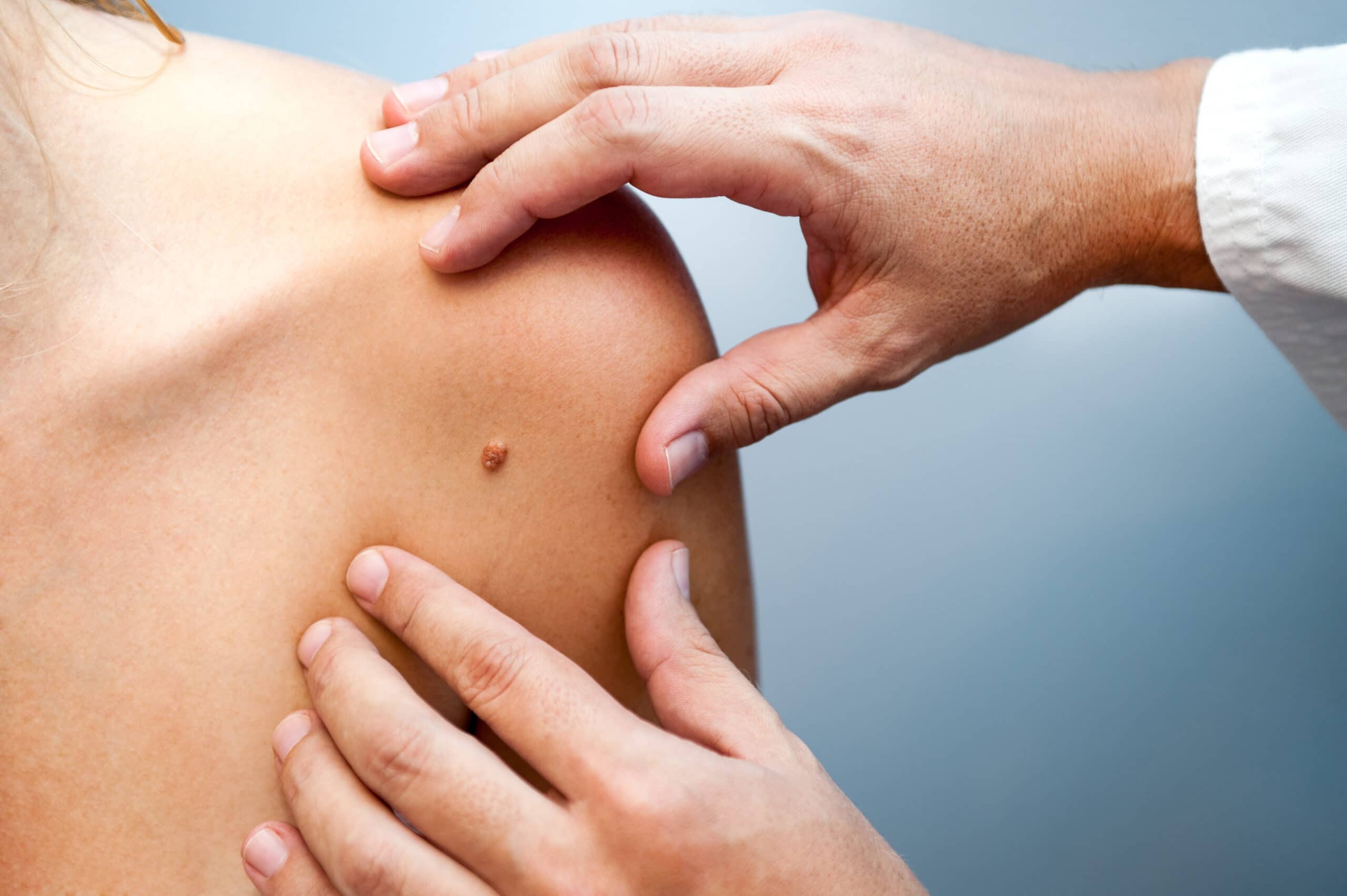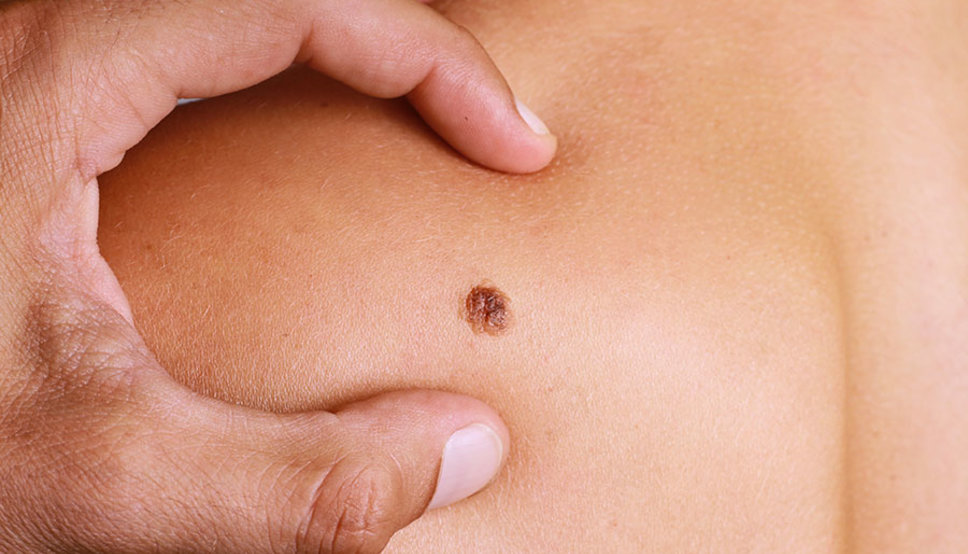Lots of people develop skin cancer. But the good news is that nearly all skin cancers are curable if early detected. Treatments for skin cancer include excision, cryotherapy, Mohs surgery, chemotherapy and radiation. There are mostly no symptoms of skin cancer in its early stage, that’s why it is important to always check your skin for any changes in size, shape or colour of skin growths. See your dermatologist once a year for a professional skin checkup.
Skin cancer is often caused by ultraviolet (UV) light exposure from the sun. Skin cancer happens when skin cells grow and multiply in an uncontrolled, unorderly way. Most skin cancers are locally destructive cancerous (malignant) growth of the skin. New skin cells form when cells grow old and die or when they become damaged.
But when this process does not take place as should, the rapid growth of cells happens and some of which may be abnormal cells. This collection of cells may be non-cancerous (benign), which doesn’t spread or cause harm, or it may be cancerous, which may spread to nearby tissue or other areas in the body if not noticed early and treated.
There are three different types of cancer, and they are:
- Basal cell carcinoma.
- Squamous cell carcinoma.
- Melanoma.
The most common type of skin cancer are basal cell carcinoma and squamous cell carcinoma, and they are sometimes called “non-melanoma skin cancer.”
While melanoma is not as common as basal cell or squamous cell carcinomas but is the most dreadful and dangerous form of skin cancer. Melanomas are more likely to spread to organs beyond the skin if it is left untreated or caught in a late stage, making them difficult to treat and potentially life-threatening.
Fortunately, if skin cancer is identified and treated early, most are cured. This is why it is important to take a few safeguards and to talk with your healthcare provider if you think you have any signs of skin cancer.
Other rare types of skin cancer are lymphomas, Merkel cell cancers, and cancers of other tissue in the skin, including sarcomas as well as hair and sweat gland tumors.
To detect skin cancer at its early stage, it is important to check the skin for any suspicious changes. The risk of having skin cancer can be reduced by limiting or avoiding exposure to ultraviolet (UV) radiation. Early detection of skin cancer gives you the greatest chance for successful treatment of your skin cancer. Below are the different symptoms of skin cancer.
Symptoms Of Skin Cancer
The symptoms of skin cancer vary depending on the type of skin cancer and its location on the skin. General descriptions of the different symptoms associated with a specific type of skin cancer are listed below.

1. Squamous Cell Carcinoma:
Squamous cell carcinoma is a type of skin cancer that develops in areas that are usually exposed to high sun. In some cases, squamous cell carcinoma can affect areas that are not exposed to sunlight. This is especially the case for people with darker skin tones. The symptoms of squamous cell carcinoma skin cancer are:
- A firm, red nodule
- A scaly or crusty lesion with irregular borders
- Painful or itchy skin lesion
2. Melanoma:
Melanoma skin cancer can occur anywhere on the body and can also develop out of existing moles that have become cancerous. Melanoma can affect people with any skin colour In darker skin tone people, melanoma tends to occur on the palms or soles of the feet. Under the fingernails and toenails. Symptoms of melanoma are:
- Change in the appearance of a mole
- Development of a large brown spot, often with irregular edges
- Dark lesions on the mucous membranes (nose, mouth, vagina, or anus) or the fingers and toes.
3. Basal Cell Carcinoma:
This type of skin cancer usually appears on the face, neck, arms, legs, ears and hands ie, areas that are exposed to high sun. However, it can appear in other areas as well. Symptoms of basal cell carcinoma skin cancer are:
- Pearly or waxy bump on the skin
- Flat, rough, or scar-like patch on the skin
- A sore that bleeds, doesn’t fully heal, or reoccurs
Skin cancer is not a racist, it’s not a respecter of a particular colour. It affects people of all skin tones, white, black, brown, chocolate, or red.
Symptoms Of Less Common Skin Cancer
Other, less common types and symptoms of skin cancer are::
4. Kaposi Sarcoma:
Kaposi sarcoma is a rare form of skin cancer which develops in the skin’s blood vessels and causes red or purple patches on the skin or mucous membranes.
Kaposi sarcoma mostly happens in people with weak immune systems, such as people with AIDS, and in people who are taking medications that suppress their natural immunity, like people who have undergone organ transplants.
Other people with an increased risk of Kaposi sarcoma include young men living in Africa or older men of Italian or Eastern European Jewish heritage.
5. Merkel Cell Carcinoma:
Merkel cell carcinoma is most often found on the head, neck and trunk. Merkel cell carcinoma causes firm, shiny nodules that occur on or just beneath the skin and in hair follicles.
6. Sebaceous Gland Carcinoma:
Sebaceous gland carcinoma is an uncommon and aggressive cancer which originates in the oil glands in the skin. Sebaceous gland carcinomas usually appear as hard, painless nodules can develop anywhere, but mostly occurs on the eyelid, where they are frequently mistaken for other eyelid problems.
Summarized Symptoms Of Skin Cancer Include:
- A new spot on the skin.
- A change in the size, shape or color of an existing spot. These changes can vary greatly, so there is no one way to describe how skin cancer looks.
- A spot that is itchy or painful.
- A non-healing sore that bleeds or develops a crust.
- A red- or skin-colored shiny bump on the top of the skin.
- A red rough or scaly spot that you can feel.
- A growth with a raised border and central crust or bleeding.
- A wart-like growth.
- A scar-like growth without a well-defined border.

When To See A Doctor
Most skin cancers are curable when detected at their early stage. It is important to make an appointment to see your doctor or dermatologist as soon as you notice the following:
- Any changes to your skin or changes in the size, shape or colour of existing moles or other skin lesions.
- The appearance of new growth on your skin.
- A sore that doesn’t heal.
- Spots on your skin that are different from others.
- Any spots that change, itch or bleed.
Your doctor will check your skin, take a biopsy (if needed), make a diagnosis and discuss treatment. Also, see your dermatologist annually for a full skin review.
Read Also: 17 Symptoms Of Breast Cancer
Conclusion
Skin cancer is a kind of cancer that affects the skin cells. It is mostly caused by ultraviolet rays from the sun. The symptoms of skin cancer vary, depending on the type of cancer. See your doctor if you notice any growth or patches on your skin that is itchy, painful or has refused to heal.



